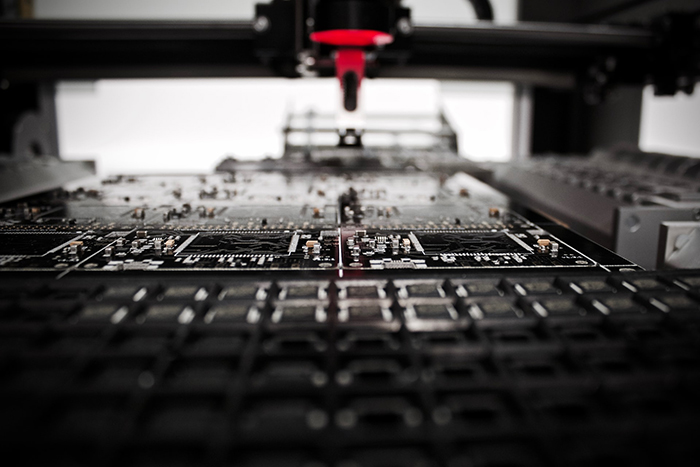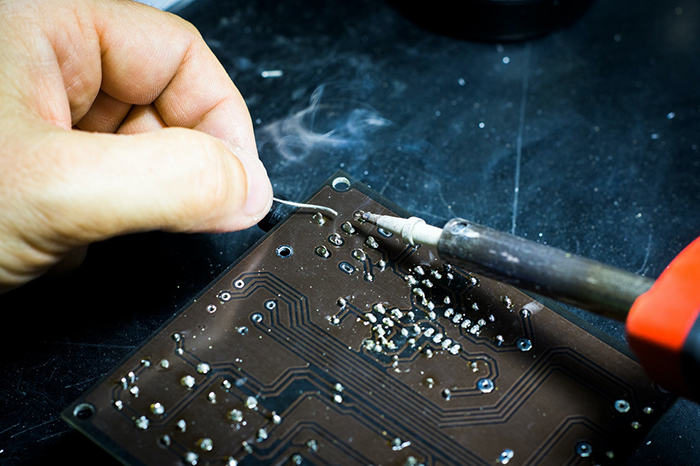Reducing the environmental impact of electronics manufacturing
As many organisations move towards more sustainable and environmentally sound practices, we must take stock of the industries and operations with the largest impact. One such category is electronic waste, which not only comes from old and recycled equipment but also the production of those technologies - namely through electronics manufacturing. And since the manufacturing environmental impact is already monumental, it makes sense to adjust accordingly. Electronic Specifier writer Emily Newton explains more.
Not only do we need a greener electronics industry, but we also need smarter and more efficient processes that reduce electronic waste, use fewer resources, and do not compound already exponentially increasing environmental issues. Digital technologies and online use, facilitated by consumers, are just as responsible for a negative impact. It brings to mind the question: what are some ways we can collectively reduce the environmental impact of electronics manufacturing and the electronics industry?
Built-in obsolescence needs to stop
Built-in obsolescence, also called planned obsolescence, is on borrowed time. Built-in obsolescence is when device manufacturers and developers reduce the performance and usability of devices - generally through software updates - to encourage people to buy brand-new and more recent technologies. For example, older smartphones may freeze or lose access to certain functions, on purpose, essentially strong-arming people into upgrading to a new phone.
It can also be achieved by creating devices or appliances that are unrepairable, requiring that they be thrown out or recycled when they malfunction.

According to an ENDS Europe agency report, obsolescence increased the number of units sold from 3.5% in 2004 to 8.3% in 2012. It’s an older study, but it shows that the life span of most electronics is shrinking considerably, which strongly encourages users to upgrade - thinking they’re replacing defective devices - and increasing e-waste, or electronic waste.
More recently, Apple came under fire for hiding battery-related problems and other tactics it used to force new device upgrades. However, Apple is not the only company guilty of such practices. It’s not a problem confined to the electronics industry, either. Printer ink cartridges, unrepairable consumer electronics, slightly modified academic textbooks, low-quality clothing, low-quality light bulbs with shortened life spans, and yearly vehicle updates, are just a few examples of obsolescence in action, too.
Leveraging ISO 14001
ISO14001:2015 is one of the most commonly recognised standards for reducing an organisation’s environmental impact, including in electronics manufacturing. It is a voluntary standard, however, which means companies get to decide whether it’s a true priority or not. Really, it should be considered a mission-critical initiative, especially as ‘green’ operations become so vital to future endeavors and success.
The standard calls for establishing an EMS, or environmental management system, to govern how companies handle various processes and tasks. It’s composed of records, policies, guidelines, and smarter practices regarding environmental impact.
By understanding and implementing the standard, organisations can develop more eco-friendly systems and move towards a greener future for the electronics industry.
Consider environmental health and safety
Becoming more environmentally friendly is about more than your tried-and-true green initiatives. It’s also about making a positive impact on the surrounding communities, including health and safety.
This might look different depending on the organisation and operation in question, but the idea ultimately is to improve processes - and materials sourcing - to find safer and less impactful alternatives. For example, it’s entirely possible to use safer chemical alternatives such as dimethyl sulfide (DMS), which has much lower toxicity than other sulfiding agents.
In electronics manufacturing specifically, there’s a host of materials used to build devices and technologies, some incredibly rare and difficult to source, and others more harmful - whether to the environment or people. Finding alternatives can be safer, healthier, and better for the planet, but it can provide a host of additional benefits, as well.
A stronger supply chain is just one example, which would help to avoid situations like the current chip shortage hitting both the automotive market and the consumer electronics market - as seen with the graphics card situation.
Thinking about the aftermath
There are recyclable forms of electronic waste, but most of it just ends up in a landfill like traditional garbage. Unlike some more sustainable options, most e-waste is not biodegradable, so it will take hundreds, even thousands, of years for materials to reach a decomposition stage. During that time, and even after, the materials in the waste are either leaching into the surrounding environment or affecting it in some way. Toxic chemicals can make an area uninhabitable, or reduce land opportunities - like preventing the growth of future greenery.

The long breakdown periods have also resulted in e-waste graveyards, designed specifically for electronic waste, and opportunistic dumping grounds for similar materials. To develop a greener electronics industry, we need to do better. Not only do we need to think about the materials and how they affect the environment and surrounding communities, but we also need to create a better game plan for what happens after we’ve disposed of electronics. Where should it all go? What materials are biodegradable, and can they be substituted? Are there better ways to recycle the materials and components?
It’s time to start thinking about the aftermath, or what follows the regular use of modern electronics and where they might end up.
Is green electronics manufacturing possible?
Even while considering the challenges presented here, it’s quite clear that electronics manufacturing, and similar industries, have a net negative impact on the environment. With the right planning and solutions, we can change that. But even so, is it possible for the industry to truly become green? Smarter and more efficient solutions can be implemented, but that doesn’t guarantee a reduced impact overall. Is a greener electronics industry achievable?
To understand, you have to consider what we have available currently and how that may or may not impact operations. For example, manufacturing is a known energy hog, which comes with its own set of environmental challenges. Fast-tracking a shift to clean and renewable energy sources is another potential solution for the entire manufacturing world, not just electronics. It will take several initiatives, such as moving to clean energy, to really make a difference.
So, the answer is yes, it is possible to create a greener operation. But it will take some time to get there, and lots of innovative solutions to overhaul existing strategies and processes. Again, we also need to start thinking about how electronics and digital technologies impact our environment and communities, namely when it comes to electronic waste.


